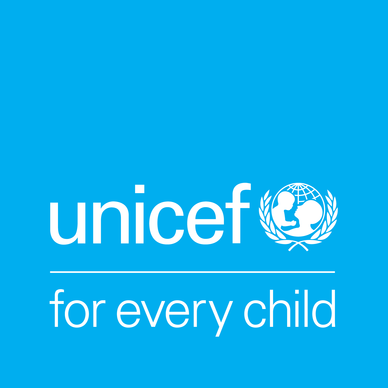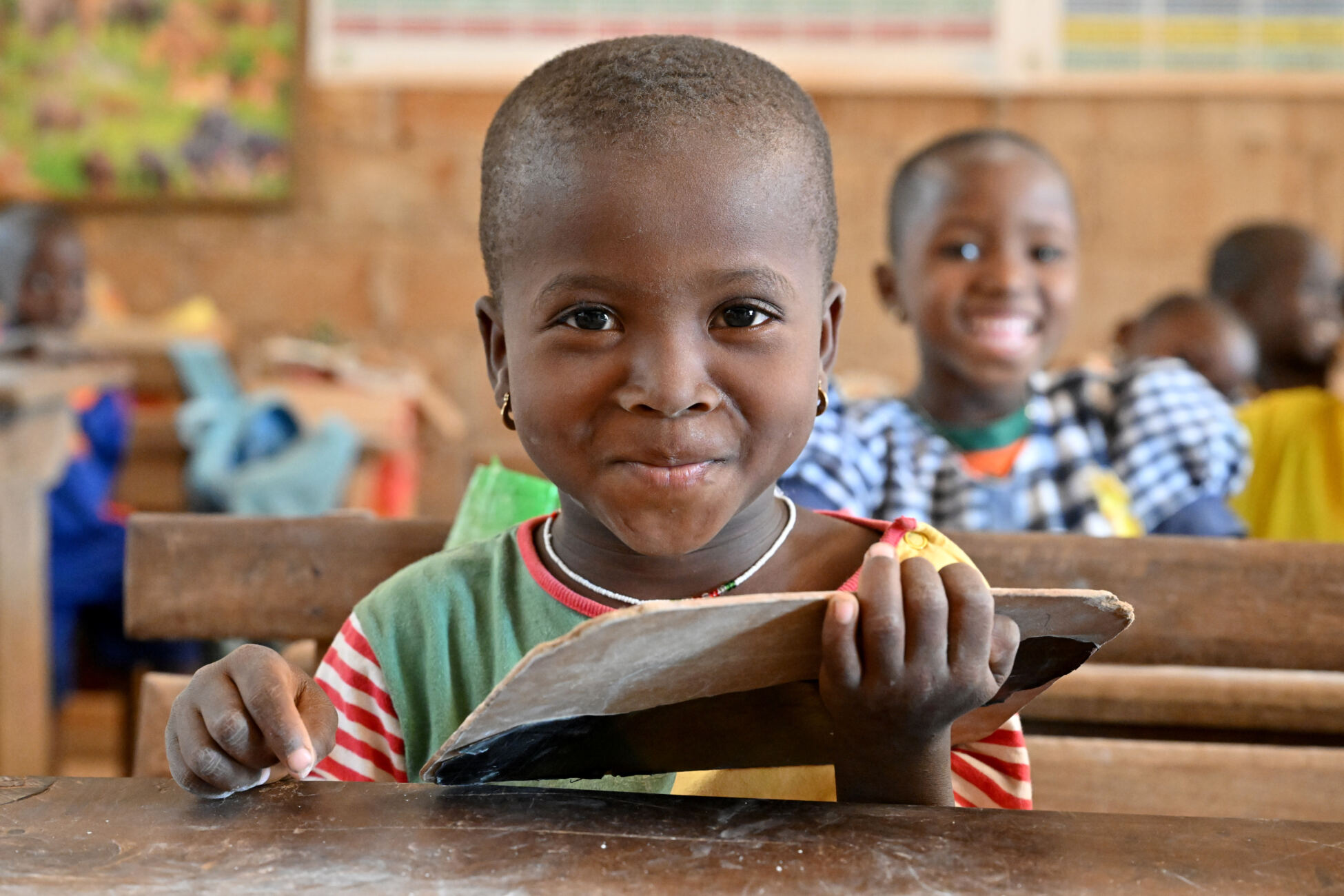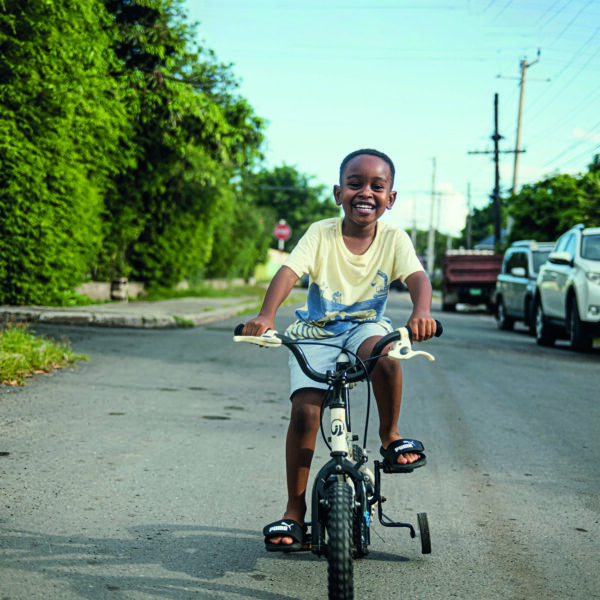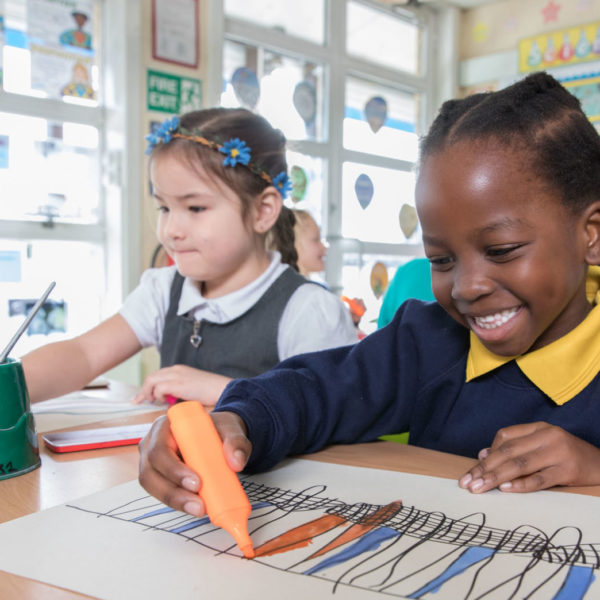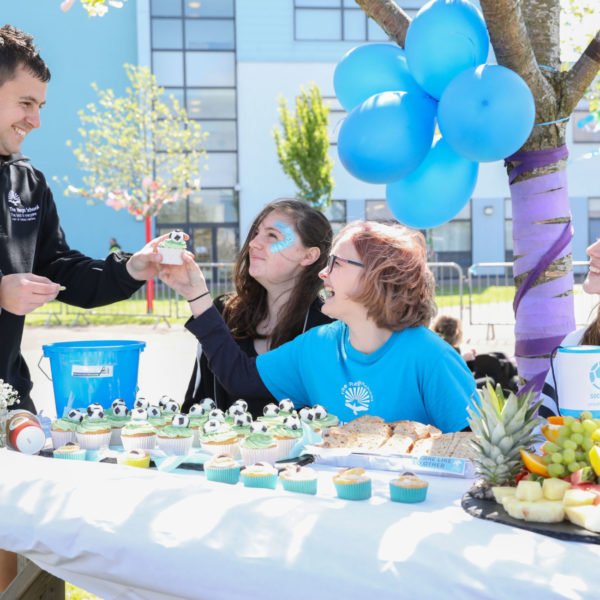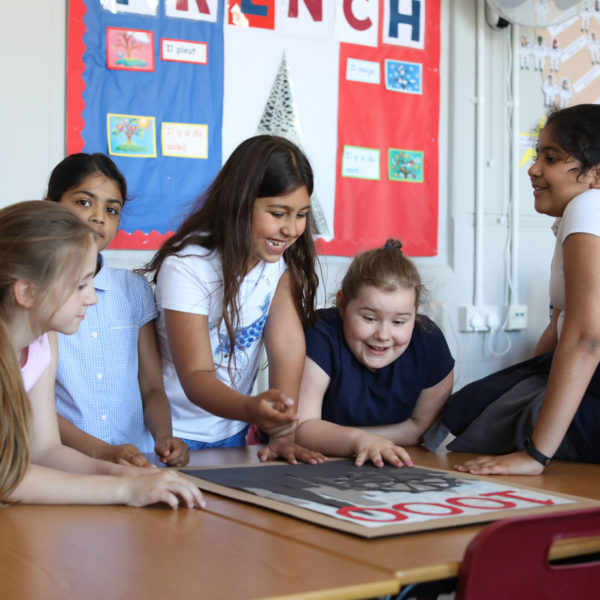Education can change a child’s life
Every child has the right to an education—whatever their ability, location, gender or ethnicity. We are working to make sure all children get the right to a quality education.
At the moment, this right is not afforded to every child. 70% of 10-year-olds in low and middle-income countries cannot read and understand a simple story. Children who haven’t had the opportunity to learn are more likely to remain trapped in cycles of poverty. They’re at greater risk of other rights violations, such as forced labour, early marriage or forced recruitment into armed groups.
Fundamentally, the right to learn is the right for children to explore, understand and discover things about the world and themselves. When that right is denied them, they are denied access to their own potential.
But we can change this and we are changing it. Every year UNICEF and our partners help millions of children get an education.
- We work with governments, communities and parents to enable every child access to a quality education.
- We set up child-friendly spaces where children can keep learning, even during a conflict or natural disaster.
- We provide them with textbooks and classroom kits.
Inclusion
In striving to make this right a reality, we are ready to innovate. Take our Accessible Digital Textbooks for All, for example. With our partners, we developed digital learning materials to meet the needs of every child. That means availability, affordability and accessibility.
These textbooks are adjustable to the individual accessibility needs of the child. For students who are blind or have low vision, there are voiceovers. For those who are deaf or hard of hearing, there is sign language. Finally, there is a plethora of activities for those who have intellectual, developmental or learning disabilities, so that the textbooks truly are for every child.
Truly, radically inclusive learning can have a huge impact on a child. Take Ari, for example. Ari was diagnosed with Auditory Neuropathy as a baby, a disorder that prevents sound travelling from the ear to the brain.
Accessible Digital Textbooks ensure that Ari’s disability doesn’t hamper his learning. Instead, he is free to learn and express himself in the way that suits him.
Donate now to help us ensure every child has that freedom.
We’re helping children learn

In 2022 alone, we provided school books and other learning materials to 28.3 million children, 3.8 million of which were during emergencies
Uliana’s Story
Three-year-old Uliana and her peers in Mykolaivka village, Ukraine, have been through a lot.
When war broke out in 2022, their tiny village suddenly became a frontline. Surrounded by shelling and gunfire, the kindergarten had little choice but to close. This left many young children without opportunities to practice communicating and making friends.
Lack of early interaction with peers can hamper a child’s ability to socialise. They may be more anxious and this in turn may impact their learning.
“Uliana came to us very reserved and shy,” Uliana’s preschool teach told us. “She wouldn’t want to play or talk. She would come to class and sit on a chair separately from everyone else.”
Now though, Uliana is lively, sociable, happy and smiling. A year ago, it seemed that this would never happen. But now she has many friends and hobbies.
Children’s lives are not defined by the crises they live through. Those crises simply define how we respond to ensure that they still have the opportunity to learn and grow.
As well as providing teaching materials, toys and books, Uliana’s UNICEF-supported kindergarten also provides children with high-quality mental health support from a psychologist.
Learn more about how we’re helping children in Ukraine and Ukrainian refugees.
